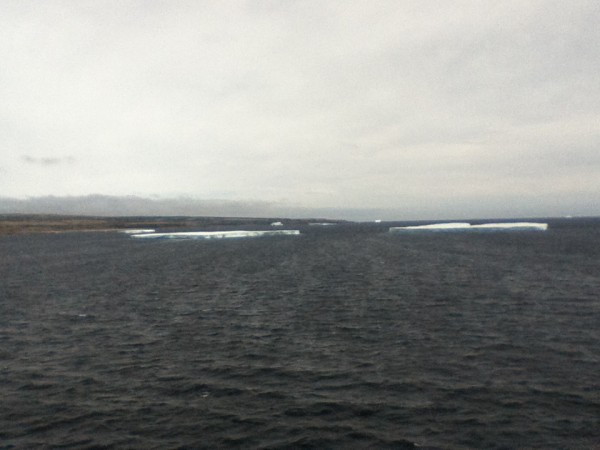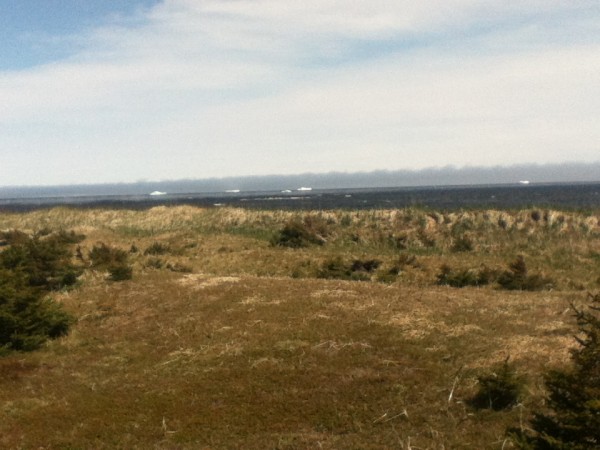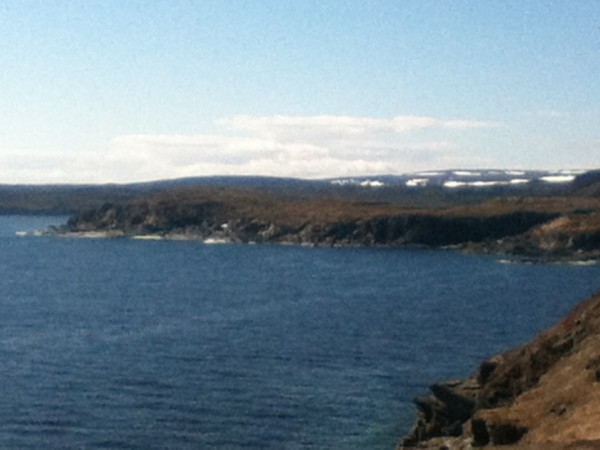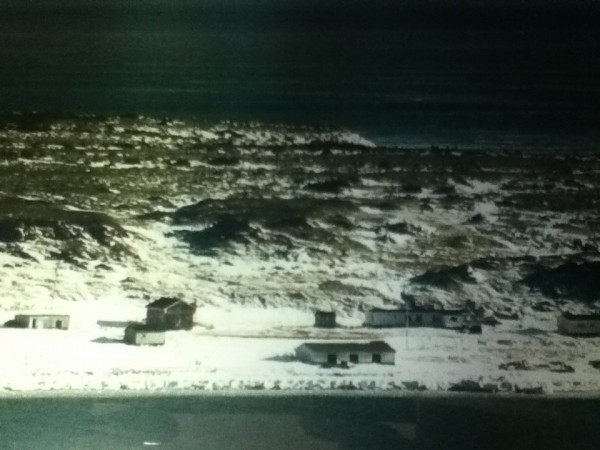Leaving Cape Breton by ferry to Newfoundland, we crept up to Northern Newfoundland along the western shore, over 360 miles. This would be 7 hours of driving if you could go the posted speed, but that would be stupid and dangerous in a country with 100,000 moose. We saw 20 in one day, all within 20 feet of the highway, including two who trotted down the middle of the road for a bit. Taller than horses, and just as massive, they are a huge hazard. We ferried across the Strait of Belle Isle to journey up to Red Bay, Labrador, 90 miles north of Newfoundland. The icebergs from Greenland, drift from the North Atlantic Ocean through this Strait into the Gulf of St. Lawrence before melting. We are so far north and approaching the summer solstice that the sun does not set until 9:00 PM with no visible stars until the gorgeous sunsets end around 11 PM. The sky begins to lighten again at 4 AM. Get out those sleep masks!
Four icebergs called “Growlers” (icebergs as big as houses) and lots of “Bergie Bits” (iceberg detritus) greeted our ferry at the arrival dock, but we counted 21 growlers within view at one time while crossing the Strait of Belle Isle between Newfoundland and Labrador. 32 degree water, frequent thick fog, and cold winds kept these giants intact since breaking loose from Greenland over 2 years ago. Sometimes they carry unlucky polar bears who swim ashore in Labrador and Newfoundland. The landscape here is rugged, with lots of exposed rounded granite hills decorated with patches of snow above tree line at 1000 feet, with some heather, tundra-like plants, and the stunted, twisted forms of fir and spruce trees below….and lots of water. Lakes, creeks, bays and harbors are especially lovely during the aspenglow evenings, and especially with a little fog and an iceberg at many harbor entrances.
Most of the villages have populations under 300 with no government services or wifi. You can travel many miles between expensive gas stations/convenience stores which must meet locals’ needs. We have been asking the Labs how they survive financially, especially as the tourist season only starts on June 21st when Canadian schools close for summer holidays, and ends mid-August. Most available jobs (like fishing and tourism) are seasonal, so people work hard for 6 weeks, then….what? We learned that most people live the rest of the year off ‘The Dole’, government unemployment insurance, based on 6 weeks of seasonal work. Labs (like the fine retrieving hunting dogs from here) are family oriented and friendly. They live simply in small homes surrounded by HUGE stacks of firewood, boast that there is no crime and no one locks their homes or cars…except paranoid visitors like us, from “away”. We advised them to lock their doors while in the U.S.
We just wish there was a stronger impulse here in Labrador to create. With that much unstructured time available, why isn’t there established cottage industry? Painting, carving, pottery, music, textile arts, and preserving berries and other foraged foods, to name a few possibilities, but they are not evident here. Winter must feel brutally long with short, dark days, snow every day from December to April, and wicked winds. Then when the winds abate and the sun comes out, the black flies swarm. Locals admit they stay inside for the entire month of the swarm each summer. No wonder it is harder to meet the locals, hear any local music or even find a pub open right now…everybody’s hiding. Without a village pub, how else can we get to know you? The only music we have heard is pop or modern country music, nothing indigenous to Labrador. Very disappointing.
As welcoming as the residents are in Labrador, we don’t foresee returning here as the paved roads become gravel in only 60 miles, at Red Bay. Along the paved route though, there is lots of hiking, with iceberg views, the Pinware Provincial Park’s private and wind-protected campsites by the Strait and the River, and a wonderful National Park Museum, on review to become a UNESCO Heritage Site. It features the sub-marine archeological finds of the local Basque Whaling industry from 1500 to 1600. Each year Spain would send 30 galleon sailing ships here for the hunt, returning full of barrels of whale oil. Overfishing, and the requisition of the galleons for military use killed the industry. The Greenland Right Whale, more commonly known as the “Bowhead” for its prominent knob used to break ice for air holes, is making a comeback with over 5000 in existence now. They remain protected; only indigenous tribes are given permits to fish them for three short seasons each year, near Red Bay. To see more of Labrador, one must either catch a plane, wait a few months and catch a snowmobile ride, or drive a gravel road with local ferry support for 20 hours to get on a paved road again at Labrador City. We didn’t find Canada’s offer of a free satellite phone for use on this long, barren stretch, to be sufficiently motivating. As much as we would love to see some caribou herds, we like the ferry back to Newfoundland better…..






Labrador – WOW!! Can you see Ireland from there? June days are very long with short nights. There are also long periods of low dramatic sun after sunrise and before sunset which can be very beautiful. Plus wonderful afterglow that seems to last for hours.
There was even a popular song – “Canadian Sunset” – in 1956 by Hugo Winterhalter inspired by this.
What stories and experiences you are having!! We miss you!!
Thanks Steven! We’re now at St John’s celebrating the town’s 125 birthday bash!